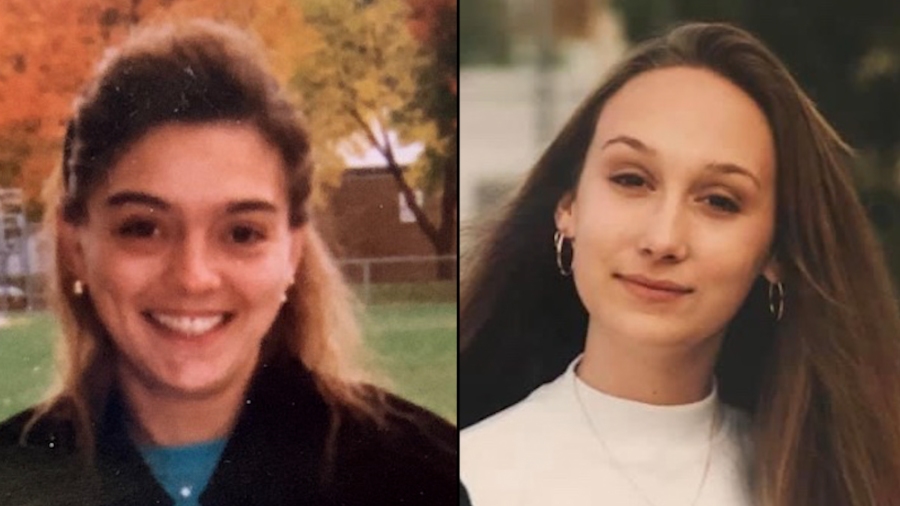
GRAND RAPIDS, Mich. (WOOD) — The genealogist who helped unlock a cold case mystery and lock up a suspected serial killer is a Michigan native.
“It feels good to work on a case from my home state,” said Linda Doyle, who now lives in New York.
“You’re ultimately giving family members answers about what happened to their loved ones,” said Doyle, a forensic genetic genealogist with California-based Identifinders International.

Doyle worked with the Kent County Sheriff’s Department to help track down the man who raped, strangled, stabbed and bound Sharon Hammack nearly 30 years ago.
A passerby spotted Hammack’s body on October 3, 1996, wrapped in a blanket and dumped in a ditch off 76th Street between Kraft and Patterson.
Hammack, 29 and a mother of two, was pregnant at the time of her murder.
“I do not like the word ‘closure’ because there isn’t any. That was forever taken from them when Sharon was taken from their lives,” said Doyle, referring to Hammack’s family.
“I just think having some answers about what happened and then seeing some justice in the process is hopefully going to help in healing,” said Doyle in a Zoom interview with Target 8.
In September 2021, the Kent County Sheriff’s Department began the process of submitting for analysis DNA from Hammack’s killer, which was found in her body and on a rope used to bind her.
Doyle spent months analyzing crime scene DNA, comparing it against nearly three million DNA samples uploaded by people tracing their ancestry to two national databases: GEDmatch and FamilyTreeDNA.
“(They’re the) only two that allow law enforcement usage, and you have to opt-in for law enforcement matching … You have to check, ‘yes’. Otherwise, you’re opting out and would not be participating in that,” explained Doyle.
In its news release on the case, Identifinders noted Doyle spent “countless hours” tracing DNA matches from Eastern Europe to Michigan.
DISTANT MATCHES, COMPLEX FAMILY PEDIGREES
“In spite of distant matches and complex family pedigrees, the forensic genetic genealogy (FGG) methodology ultimately (led) to one contributor of the DNA left at the crime scene – Garry Dean Artman,” wrote Identifinders International in its statement on the Hammack case.
Artman, an over-the-road trucker who lived in Grand Rapids at the time of Hammack’s murder, was arrested Tuesday, Aug. 16 by the Mississippi Highway Patrol.
He was driving a commercial truck at the time.
Artman’s DNA tied him to Hammack’s murder and that of an Arizona woman whose body was found near a truck stop in Maryland.
Dusty Shuck, 24 and the mother of a young son, was found beaten and stabbed on eastbound I-70 near Mt. Airy, Maryland.

The long-haul trucker remains behind bars in Forrest County, Mississippi, awaiting extradition to West Michigan to face charges in Hammack’s rape and murder.
“This is my first case with a long-haul driver,” said Doyle, who was limited in what she could share regarding her work on the Hammack murder.
“Not great matches. Distant matches,” said Doyle of the DNA that helped construct what ultimately turned out to be Garry Artman’s family tree.
Doyle narrowed the search down to Artman’s parents, both of whom are deceased.
The Artmans had four sons, only one of whom had ties to the Hammack murder scene and that of Dusty Shuck.
Doyle noted she only provided Kent County with a lead; it was the detective who built the case against Arman from there.
“There is that ‘ah-hah’ moment, and you’re like, ‘my gosh, I’ve got an answer that’s going to make a family very happy that they have some answers. But of course, that all has to be verified to make certain that you’re submitting (to police) the correct lead. Then, from there, law enforcement has a great deal of work to do based on the leads we submit. So, yeah, we’re just giving a tip,” Doyle said.
She said the complexity of the cases she researches vary significantly.
STRONG MATCHES, PUBLIC RECORDS KEY
“It just depends on the strength of the matches and the availability of the public records in order to build the family tree. Sometimes you’re just waiting for a better match. Other times, it’s more complicated genealogy. It takes some time,” explained Doyle, who said she usually works with third cousins or second cousins once or twice removed.
“I recently did a case where I only had about 40 centimorgans, which is the measure of DNA, so that’s very low level, and I was able to submit a successful lead on that, which of course then is verified by a comparison test,” she said.
“But the reason that was successful was because I had very distinct matches on the paternal side and the maternal side, and it was international,” said Doyle. “So, the families came together in one spot in the United States, living a mile away (from) where the crime was committed. Location plays a big part.”
Doyle could not share how distant the Artman matches were, nor how many she discovered.
Among Doyle’s successful cases, the most distant initial match was a sixth cousin once removed.
“I’ve seen some cases where there are 1,400 matches, and then I’ve seen cases where there are close to 20,000,” said Doyle.
She encourages people to upload their DNA and approve its usage for law enforcement purposes.
“The databases are not huge right now. 3 million is not a huge pool and, certainly, the more matches the better,” said Doyle.
She also noted the critical role public records play in solving genealogical jigsaw puzzles.
“Whether they’re census or marriage licenses, death records, obituaries. Those all help in building a family tree,” said Doyle.
In the case of Sharon Hammack’s killer, Doyle said the availability of public records was mixed.
TEN CASES SOLVED IN ONE YEAR
The Hammack case was Doyle’s tenth success since she started with Identifinders in August 2021.
She could not reveal details regarding those ten cases.
“My fellow genealogists and I have a skill that can submit successful leads and help law enforcement close these cases and give families answers. And, of course, if the perpetrator’s still living, they could potentially be a current threat. I want to get violent offenders off the street,” she said.
Doyle said she’s grateful she can play a part in providing answers — and justice — for families that have sought both for decades.
“Sharon (Hammack) was from a marginalized community, and she’s a person and she has family that loves and cares about her. I want them to have answers,” she said.
Doyle, a member of the Association of Professional Genealogists, began performing forensic genetic genealogy around 2012.
Originally, she worked on adoption cases and misattributed parentage. As of this month, she’s had 256 successful identifications related to that work.














